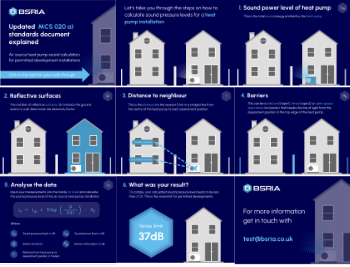Real time kinematic RTK
Contents |
[edit] Introduction
Real time kinematic (RTK) is a surveying technology used by drones to make real time corrections to images captured by global positioning systems (GPS) and other Global Navigation Satellite Systems (GNSS). The other type of correction technology is known as post processed kinematic or PPK, which corrects location data after it has been collected and uploaded.
[edit] Correction technology background
Both RTK and PPK GPS correction technologies are effective at capturing pinpoint location information. They are believed to be improvements over the use of ground control points (GCPs), which is the traditional method of capturing this information. A GCP is a location or object with known coordinates that is used as a reference point for surveying purposes.
Both forms of GPS correction technology are incorporated directly into drone equipment.
[edit] Capabilities of RTK
RTK technology is suitable for flat areas where obstructions are minimal. This is important, since trees, mountains or other projects can disrupt communications. Since RTK relays information in real time, it requires reliable connectivity in order to send the information steadily. An interrupted connection can disrupt the data capture and transmission process and create gaps.
It is possible for an RTK user to obtain 2 cm level positioning in plan, and even better if they are careful. With RTK, the distance from the reference station can have an impact on the final positional accuracy that can be achieved.
[edit] Networked RTK
A technique known as networked RTK has developed which links together data from a number of dual frequency GPS receivers in real time – providing RTK correction solution or a regional differential code GPS (dGPS). Examples of networked RTK systems are the commercial services built on the Ordnance Survey OS Net™ national GPS infrastructure.
Non-networked RTK relies on a single base-station receiver and a number of mobile units. However, with networked RTK there is no need to set up a local base station and the accuracy is not dependent on the base-to-rover receiver distance. This can sometimes result in cost savings measures.
[edit] Related articles on Designing Buildings
- Construction drones.
- Geographic information system GIS.
- Geospatial.
- Global positioning systems and global navigation satellite systems.
- Ground control point GCP.
- Interview with Elly Ball, co-founder Get Kids into Survey.
- Land surveying.
- Post processed kinematic PPK.
- Surveying instruments.
- Uses of drones in construction.
- Using satellite imagery to monitor movements in megaprojects.
Featured articles and news
Gregor Harvie argues that AI is state-sanctioned theft of IP.
Heat pumps, vehicle chargers and heating appliances must be sold with smart functionality.
Experimental AI housing target help for councils
Experimental AI could help councils meet housing targets by digitising records.
New-style degrees set for reformed ARB accreditation
Following the ARB Tomorrow's Architects competency outcomes for Architects.
BSRIA Occupant Wellbeing survey BOW
Occupant satisfaction and wellbeing tool inc. physical environment, indoor facilities, functionality and accessibility.
Preserving, waterproofing and decorating buildings.
Many resources for visitors aswell as new features for members.
Using technology to empower communities
The Community data platform; capturing the DNA of a place and fostering participation, for better design.
Heat pump and wind turbine sound calculations for PDRs
MCS publish updated sound calculation standards for permitted development installations.
Homes England creates largest housing-led site in the North
Successful, 34 hectare land acquisition with the residential allocation now completed.
Scottish apprenticeship training proposals
General support although better accountability and transparency is sought.
The history of building regulations
A story of belated action in response to crisis.
Moisture, fire safety and emerging trends in living walls
How wet is your wall?
Current policy explained and newly published consultation by the UK and Welsh Governments.
British architecture 1919–39. Book review.
Conservation of listed prefabs in Moseley.
Energy industry calls for urgent reform.























